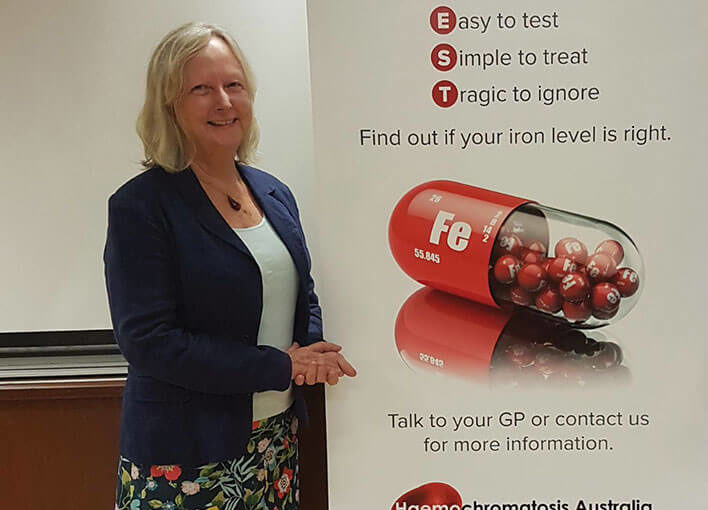1 in 7 people of Caucasian heritage carry the gene and the condition affects 1 in 200 people, which makes it the most common genetic condition in Australia. However, few people have heard of haemochromatosis.
World Haemochromatosis Week comes around on 3-9 June. Dr Dianne Prince has recently taken on the role of President of Haemochromatosis International and is seeking to increase worldwide awareness of the disease.
Why should we worry about haemochromatosis?
Haemochromatosis is a genetic condition that causes the body to absorb and store too much iron. This places strain on the body’s organs and tissues and if not treated can lead to serious health problems.
Symptoms of the illness vary; they might include fatigue, joint pain and abdominal pain of varying severity. These are similar to symptoms of other common conditions, and are often put down to aging. This makes it hard for doctors to diagnose the disease early, which is why those in the field are concerned by the lack of public awareness.
Iron overload impact bigger than we thought
Research released this year from the University of Exeter in the UK and the University of Connecticut in the USA showed that the affects of haemochromatosis in contributing to other health problems are actually worse than previously thought.
The two large studies found that haemochromatosis compounds the risk of diabetes, liver disease and arthritis. The research also found that older adults with the genetic condition (60-70 years of age), were at increased risk of chronic pain, frailty and sarcopenia (loss of skeletal muscle mass associated with aging).
Analysis of UK Biobank data found that deaths from liver cancer in men with the C282Y mutation in the HFE gene were much higher than anticipated.
Also in men, researchers found that 1.6% of all hip replacements and 5.8% of all liver cancers occurred in those with the two haemochromatosis gene mutations.
“The gene is more prevalent in families of Celtic origin descended from Viking stock which are now dispersed globally. Our international alliance of volunteer organisations enables us to work together to expand knowledge and awareness about the condition,” Dr Prince said.
If you have symptoms or a relative with haemochromatosis, you can talk to your doctor about testing. If repeat blood tests reveal high iron levels, a genetic test can be performed to look for C282Y and/or H63D mutations in the HFE gene. You’ll be diagnosed with haemochromatosis (or at risk of developing iron overload) if you are found to have two faulty copies of the gene. With only one mutation you’ll be told you are a carrier – this means you are unlikely to have any symptoms but may pass the condition on to a child.
Treatment involves regular venesection (giving blood) to remove iron from the body to prevent the build up that leads to symptoms and longer term damage of organs and tissues.
*IMAGE: Dr Dianne Prince

